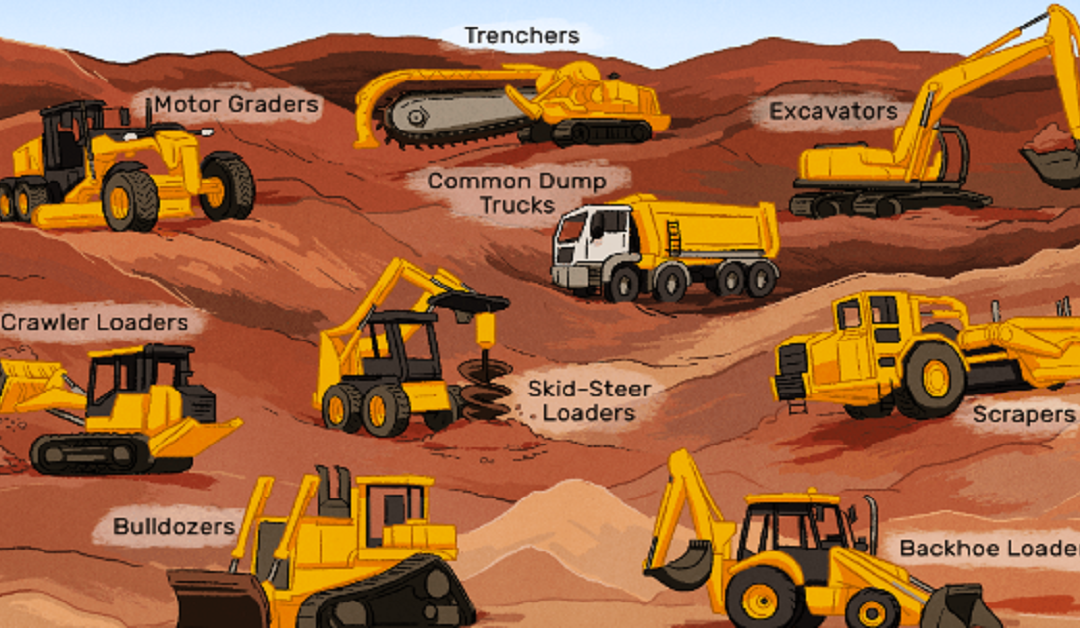Heavy Equipment Rental: High-Quality Equipment for Lease
Wiki Article
Renting Out Vs. Purchasing Building And Construction Tools: Making the Right Selection for Your Job
When getting started on a building project, one of the vital choices that project stakeholders and supervisors encounter is whether to get or lease building and construction equipment. The choice hinges on numerous aspects such as cost considerations, project duration, devices maintenance, scalability, adaptability, and danger management.Expense Factors To Consider
When assessing the financial aspect of getting versus leasing building and construction tools, the long-lasting expenditures and in advance expenses have to be very carefully thought about. Leasing tools commonly calls for reduced preliminary repayments contrasted to buying, making it an eye-catching alternative for temporary jobs or service providers with spending plan constraints. Leasing removes the need for big capital investments and lowers the monetary risk connected with devices possession, such as upkeep and devaluation costs. However, in the future, continuously leasing tools can collect higher costs than purchasing, particularly for prolonged tasks.On the various other hand, acquiring building devices involves greater upfront prices however can result in long-lasting financial savings, especially for frequent customers or lasting tasks. Having equipment offers flexibility, benefit, and the possibility for resale value once the task is finished. In addition, having equipment enables modification and experience with particular equipment, potentially increasing effectiveness and productivity on-site. Ultimately, the choice in between acquiring and renting building and construction devices depends upon the task's period, frequency of usage, spending plan considerations, and lasting financial objectives.
Task Duration

On the other hand, for lasting jobs or continuous building job, buying tools might be the a lot more economical choice. Purchasing devices can lead to set you back financial savings in the future, especially if the equipment will certainly be regularly made use of. Additionally, possessing tools provides a feeling of control over its accessibility and permits personalization to fit certain task needs.

Equipment Upkeep
Given the vital role task period plays in figuring out the most cost-efficient approach between buying and renting construction equipment, the focus currently moves in the direction of taking a look at the necessary element of equipment upkeep. On the other hand, possessing equipment calls for a proactive method to maintenance to prevent failures, ensure safety and security, and expand the tools's lifespan. Eventually, a well-kept building equipment fleet, whether leased or possessed, is necessary for the effective and reliable completion of construction jobs.Versatility and Scalability
In the realm of construction equipment administration, the facet of flexibility and scalability holds substantial importance for task effectiveness and source usage. Opting to rent out building and construction equipment supplies a high level of versatility as it permits for the quick adjustment of tools kinds and amounts based on the developing requirements of a job. Renting enables contractors to access a broad variety of customized devices that might be required for details jobs without the lasting dedication of ownership. This versatility is specifically advantageous for projects with differing demands or unclear durations (heavy equipment rental).In addition, scalability, another critical aspect, is naturally linked to flexibility. Renting building and construction tools offers the benefit of quickly scaling procedures up or down as task demands rise and fall. Contractors can swiftly include or trade equipment to match the task's transforming needs without the restraints of having assets that may come to be underutilized or obsolete. This capacity to scale sources efficiently can lead to cost savings and enhanced project timelines, making leasing a desirable alternative for jobs calling for flexibility and receptive source allotment.
Threat Administration
Reliable danger management in building tools procedures is paramount to ensuring task success and mitigating prospective financial losses. Building tasks inherently include different dangers, such as devices breakdowns, crashes, and job delays, which can substantially influence the project timeline and budget. By thoroughly considering the risks related to owning or renting out building devices, task managers can make enlightened choices to lessen these prospective hazards.Renting construction tools can supply a degree of danger reduction by moving the responsibility of upkeep and repair work to the rental company. This can reduce the economic concern on the job proprietor in case of unforeseen devices failings (forklift rental). In addition, renting supplies the versatility to gain access to specific tools for details job stages, lowering the threat of having underutilized machinery
On the other hand, possessing building and construction tools provides a feeling of control over its use and upkeep. Nevertheless, this also implies birthing the full directory responsibility for repair work, upkeep costs, and depreciation, increasing the economic threats linked with equipment bucket loader rental near me possession. Careful threat analysis and factor to consider of factors such as job duration, equipment utilization, and upkeep demands are critical in identifying the most appropriate choice for reliable threat management in building tasks.
Conclusion
To conclude, when determining between acquiring and leasing building and construction tools, it is essential to consider expense, task duration, devices maintenance, risk, adaptability, and scalability administration. Each variable plays a vital duty in establishing the most appropriate choice for the task available. By very carefully examining these facets, task managers can make an informed choice that lines up with their budget plan, timeline, and general task objectives.
Report this wiki page